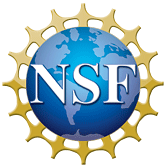Climatology characteristics of ionospheric irregularities described with GNSS ROTI
To Access Resource:
Questions? Email Resource Support Contact:
-
opensky@ucar.edu
UCAR/NCAR - Library
| Resource Type | publication |
|---|---|
| Temporal Range Begin | N/A |
| Temporal Range End | N/A |
| Temporal Resolution | N/A |
| Bounding Box North Lat | N/A |
| Bounding Box South Lat | N/A |
| Bounding Box West Long | N/A |
| Bounding Box East Long | N/A |
| Spatial Representation | N/A |
| Spatial Resolution | N/A |
| Related Links | N/A |
| Additional Information | N/A |
| Resource Format |
PDF |
| Standardized Resource Format |
PDF |
| Asset Size | N/A |
| Legal Constraints |
Copyright author(s). This work is licensed under a Creative Commons Attribution-NonCommercial 4.0 International License. |
| Access Constraints |
None |
| Software Implementation Language | N/A |
| Resource Support Name | N/A |
|---|---|
| Resource Support Email | opensky@ucar.edu |
| Resource Support Organization | UCAR/NCAR - Library |
| Distributor | N/A |
| Metadata Contact Name | N/A |
| Metadata Contact Email | opensky@ucar.edu |
| Metadata Contact Organization | UCAR/NCAR - Library |
| Author |
Kotulak, K. Zakharenkova, Irina Krankowski, A. Cherniak, Iurii |
|---|---|
| Publisher |
UCAR/NCAR - Library |
| Publication Date | 2020-08-14T00:00:00 |
| Digital Object Identifier (DOI) | Not Assigned |
| Alternate Identifier | N/A |
| Resource Version | N/A |
| Topic Category |
geoscientificInformation |
| Progress | N/A |
| Metadata Date | 2025-07-11T19:16:42.117631 |
| Metadata Record Identifier | edu.ucar.opensky::articles:24945 |
| Metadata Language | eng; USA |
| Suggested Citation | Kotulak, K., Zakharenkova, Irina, Krankowski, A., Cherniak, Iurii, Wang, N., Fron, A.. (2020). Climatology characteristics of ionospheric irregularities described with GNSS ROTI. UCAR/NCAR - Library. https://n2t.org/ark:/85065/d7gx4g3f. Accessed 24 October 2025. |
Harvest Source
- ISO-19139 ISO-19139 Metadata

